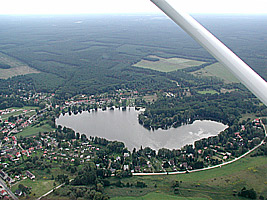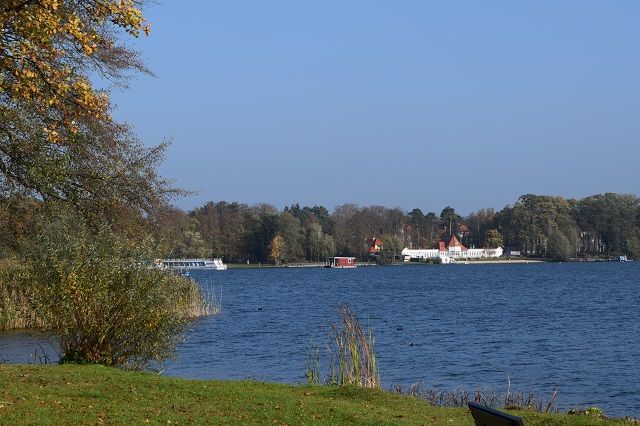Baberowsee
The Baberowsee is a body of water in the Oder-Spree district of Brandenburg at Kagel. He is surrounded by a dense reed beds. In the lake are found mainly eels, perch, pike, carp, tench, catfish and walleye.
Description
The lake is part of the chain of lakes ( from southwest to northeast ) Elsensee Baberowsee → → → Bauernsee Liebenberger lake that drains over their northernmost part, the Liebenberger lake, in the Löcknitz. The Löcknitz flows east parallel to the lakes and flows in the Berlin glacial valley in the Spree. The Löcknitz occurs north of the chain of lakes by the confluence of the Stobberbachs with the outflow of Maxsees. The chain of lakes is one of the Buckower gutter (also: Löcknitz Stobber - channel ), a glacial meltwater channel that has emerged in the last two phases of the Weichsel glaciation between the filled of dead ice Oder and Berlin glacial valley (today Spreetal ) and the Barnim plate from the Lebus plate separates. This 30 kilometers long and two to six kilometers wide channel drains from the fen and headwaters Rotes Luch on the Stobber to the northeast to the Oder and Stobberbach / Löcknitz to the southwest to the river Spree. To the south, the Grünheider lakes chain connects from Möllensee, Peetzsee and Werlsee that accrues to the New Löcknitz ( Löcknitzkanal ). The lake lies at an altitude of 38,6 meters above sea level.
Like all Grünheider lakes and territories was also the Baberowsee of the mid-13th century to its secularization in the possession of the monastery located at Jiiterbog Zinna. Kagel made the Cistercian monks to a kind of base and built on the banks of Baberowsees a so-called field monastery.
The name of the lake is loud Eva Driescher back to the Slavic settlement time and means Bibersee. The translation of Heinrich Berghaus in the land book of Mark Brandenburg from 1854/56 as Barbarasee has Driescher, geographer at the Leibniz Institute of Freshwater Ecology and Inland Fisheries, back.










